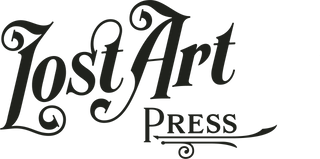'With All the Precision Possible: Roubo on Furniture' New Deluxe Edition
by Donald C. Williams, Michele Pietryka-Pagán & Philippe Lafargue
You can download an excerpt from this book here.
This new deluxe edition of “With All the Precision Possible: Roubo on Furniture” is a worthy reflection of more than a decade of work by an international team that produced the first English translation of the 18th-century woodworking masterpiece: “l’art du Menuisier” by André-Jacob Roubo. This translation covers Roubo’s writing on woodworking tools, the workshop, joinery and building furniture.
In addition to the translated text and color images from the original, “With All the Precision Possible: Roubo on Furniture” also includes five contemporary essays on Roubo’s writing by craftsmen Christopher Schwarz, Don Williams, Michael Mascelli, Philippe Lafargue and Jonathan Thornton.
“Roubo on Furniture” is filled with insights into working wood and building furniture that are difficult or impossible to find in both old and modern woodworking books. Unlike many woodworking writers of the 18th century, Roubo was a traditionally trained and practicing joiner. He interviewed fellow craftsmen from other trades to gain a deep and nuanced view of their practices. He learned to draw, so almost all of the illustrations in this book came from his hand.
The above facts are important because many early woodworking books are filled with information that is not quite right and drawings that were made by non-woodworkers. Not so with Roubo.
No matter what sort of woodworking you do or your skill level, we think “Roubo on Furniture” will expand greatly your knowledge of how fine furniture was (and still should be) built.
Like all Lost Art Press books, it is printed and bound in the United States. The deluxe edition is 9″ x 12″, printed in color on acid-free #100 coated matte paper. The signatures are Smyth-sewn, and the end papers are printed with images of some of the plates.
The cloth cover for the boards is a vibrant cobalt blue with a gold foil stamp, and the headbands are gold and blue to match. The cover is protected with a gloss laminate dust jacket.
This deluxe volume is built to stand the tests of time, shop and kids (as well as look great on your bookshelf).
A Note on Previous Editions of this Book
This is the third version of “With All the Precision Possible: Roubo on Furniture.” All three books have the same words drawings and images. Our first deluxe edition of this book was 11" x 17" and came in a slipcase. It is sold out. Our second version was 8-1/2" x 12" and had a light blue cloth cover. It was printed on uncoated paper in black and white. It also is sold out. This third edition is a size that is manageable on your lap, printed in full color on coated paper and features other material upgrades.
About the Authors

Donald C. Williams
Don Williams is a conservator, educator, scholar and all-around inquisitive guy, having worked on some of the most interesting objects and historic buildings in our nation’s public and private collections. He has developed, managed and presented educational programming on an array of subjects in the fields of conservation, woodworking and wood finishing, and has published and presented scholarly research on subjects like ancient coating materials and craft techniques, and created pioneering uses for traditional and modern materials, including some of his own invention.
Read more about Don in this full profile.

Michele Pietryka-Pagán
Michele Pagán, a recently returned native Vermonter, graduated from the University of Vermont and the University of Connecticut, where she studied clothing and textiles. Having accrued nearly 40 years of conservation experience, her previous clients and employers include the Colonial Williamsburg Foundation, The Smithsonian Institution’s Museums of American History and African-American History, the U.S. Department of State, Mount Vernon, Thomas Jefferson’s Monticello, the State of Vermont, and the Bishop Museum in Honolulu, HI, among others.
Today, she is a textile conservator working out of her studio in East Dorset, "saving history one piece of fabric at a time." The Bennington Museum, where she is a Summer Teachers' Institute presenter, recently published her research, "Geography and Technological Change in Vermont: The Transition from Homespun Flax to Machine-Made Cotton Textiles." She's also part of the national effort to find and document 19th-century schoolgirl needlework samplers.
Read more about Michele in this full profile.

Philippe Lafargue
Philippe Lafargue is a graduate from the École Boulle, specializing in chairmaking. His natural curiosity for both heritage and modernity led him to the United States. His atypical career path, from the scientific approach to heritage conservation to the direction of a historical museum, including his active involvement in the conception and design of a museum offering new interactive experiences, confirmed to him that life and its history are in perpetual motion. His co-participation in the translation of ancient works illustrates his desire to transmit timeless know-how.
Read more about Philippe in this full profile.







